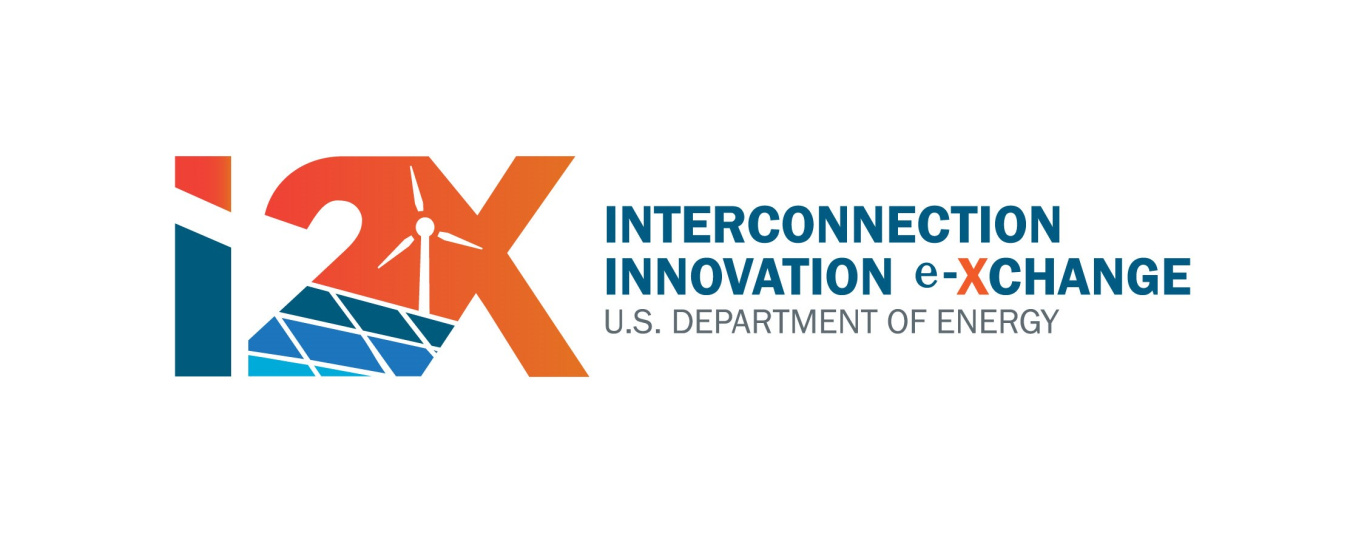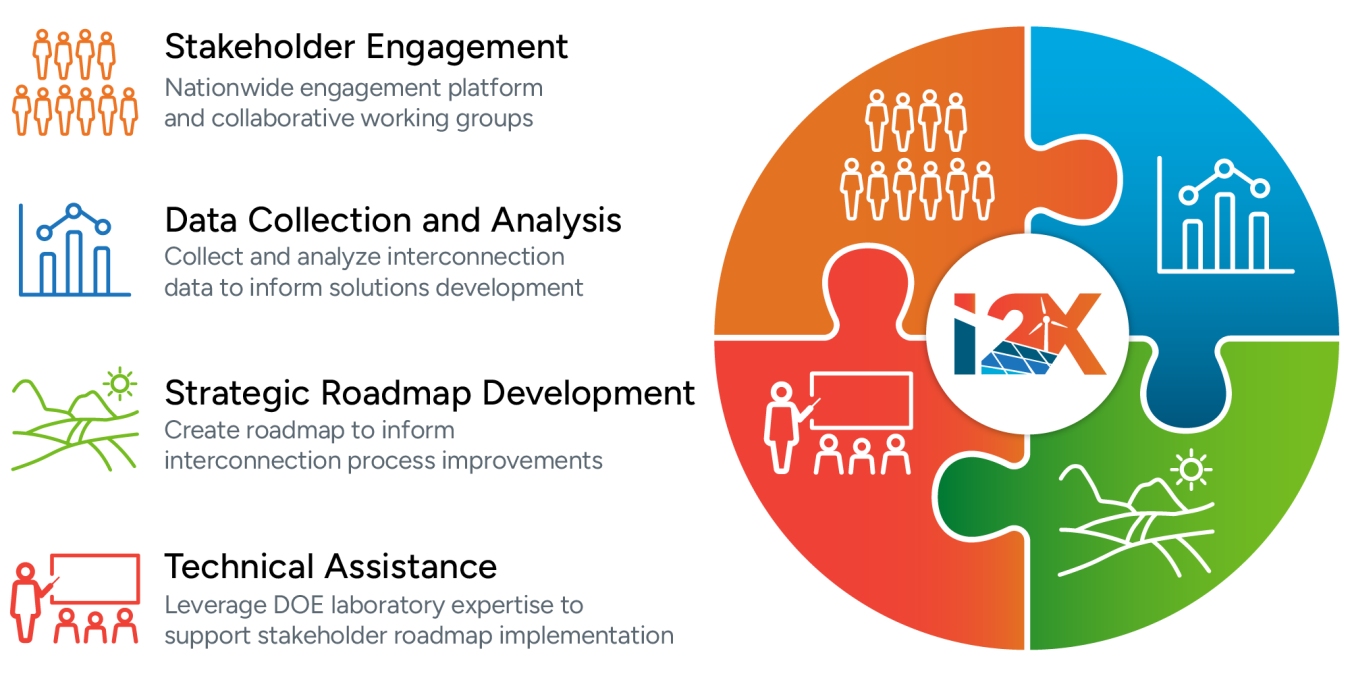
The Interconnection Innovation e-Xchange (i2X™) enables a simpler, faster, and fairer interconnection of clean energy resources all while enhancing the reliability, resiliency, and security of our electric grid. The program is led by the U.S. Department of Energy (DOE) Solar Energy Technologies Office (SETO) and Wind Energy Technologies Office (WETO) in conjunction with other DOE offices.
i2X Quick Links
i2X News
-
- Solar
- Wind
- Wind
August 14, 2024 -
- Clean Energy
- Energy Storage
- Energy Storage
- Energy Storage
- Energy Storage
March 19, 2024

The i2X program facilitates collaboration by conducting four key activities: Stakeholder Engagement, Data Collection and Analysis, Strategic Roadmap Development, and Technical Assistance.
Contact Us
Schedule “office hours” with i2X, where you can discuss any issues you have with interconnection. You can also email us at i2X@ee.doe.gov and check out i2X events.
Improving Interconnection
Renewable energy and energy storage resources need to be connected to the distribution and bulk power grids through a process known as interconnection. The process involves an interconnection customer, like a wind or solar developer, who submits an application to an electric service provider or independent system operator responsible for managing and operating the grid, to connect a new generating facility. The electric service provider must then evaluate the existing resources on the grid to determine whether the project can be built, connected, and operated in a safe and reliable way.
Interconnection is dictated by a complex network of laws, regulations, and administrative processes that have been developed at the regional, state, or utility-territory level. Current interconnection procedures, however, are not designed to accommodate the deployment of the hundreds of gigawatts of solar energy, wind energy, and energy storage resources. Consequently, many new projects get delayed in interconnection queues, sometimes for years, awaiting review, study, and approval. At the same time, it is important to be sure that adding new resources to the grid will not result in safety issues, equipment problems, or power outages.
Because interconnection is inherently a local, state, or regional process involving many stakeholder groups – an interconnection customer, an electric system provider or grid operator, and a regulatory body that establishes the rules – interconnection challenges vary depending on location. In addition, the challenges are multi-disciplinary and require expertise in electrical engineering, economics, regulation, and technology. Solving interconnection delays and streamlining processes requires an open, inclusive, and collaborative “all hands on deck” approach.
No one organization or entity can solve interconnection challenges alone. That’s why DOE and the national labs are partnering with utilities, grid operators, state and local governments, energy industry groups, non-profits, and others to share data, develop roadmaps, and facilitate new solutions to improve interconnection procedures. Involving everyone across the interconnection ecosystem will help reimagine, retool, and shape the grid of the future.
Join Us
The i2X program requires the involvement of a wide range of stakeholders to address interconnection challenges. Join i2X today to contribute to developing innovative solutions, and sign up for i2X Connect to engage with other stakeholders on key interconnection topics.

